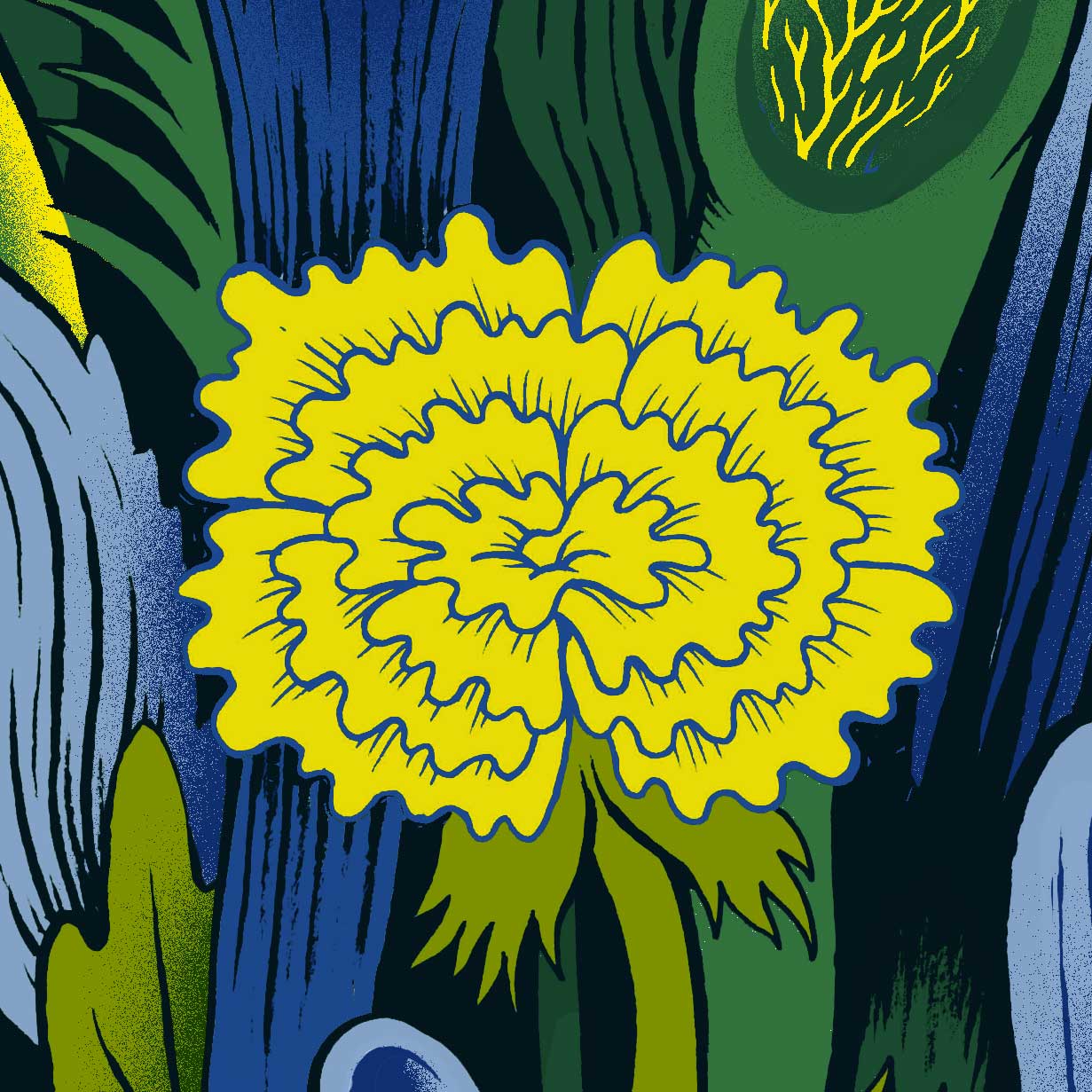
This blog post is part of a series on our Good Problems team. Each post looks at a different step in the process of designing a funding programme and makes suggestions about how to optimise to achieve a greater impact.
What are the skills and resources a community of solvers needs to build solutions to a good problem?
After identifying a good problem it’s natural to start thinking about how to solve it. Or in the case of a funding organisation, how to incentivise the right people to solve it.
The first step is to understand the skills, resources, and collaborations needed to solve a problem. This takes time and consideration. It’s not only important to understand the needs of those already working on the problem (or closely related problems), but also to understand how new sets of skills, ideas, and perspectives could be brought together to create new solutions.
In this post we talk through some of the tools that help us make sense of a community of solvers, from identifying relevant skills and resources, to understanding blockers, motivators, and risks.
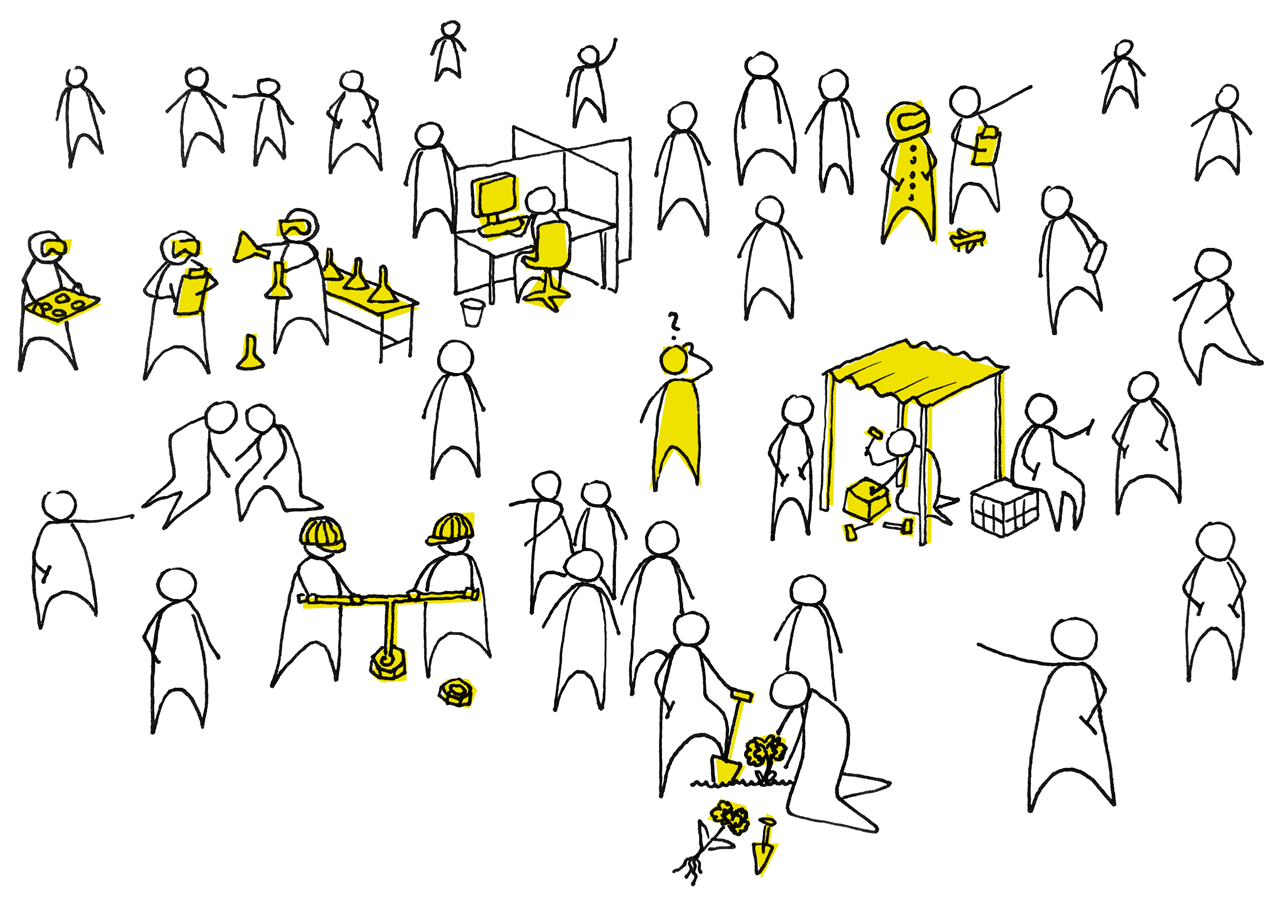
Identifying Solvers
By ‘solver’ we mean anyone who is currently working or could be working on building solutions to a problem. To identify them, we start by asking what makes a good community of solvers, rather than who they are:
- What are the skills and experiences needed to solve the problem? What domain-specific expertise is needed? What other skills or perspectives would be useful?
- What kind of resources and/or facilities are needed to solve the problem? Is a lab or special equipment needed or can solutions be prototyped more simply?
Emphasizing the skills or perspectives required to come up with impactful solutions is important because people rarely identify with a problem if it’s outside of their line of work or interest. But there are many problems that would benefit from an outsider’s perspective. An example of this is our work with the Humanitarian Innovation Fund (the HIF) around gender-based violence (GBV) prevention in humanitarian emergencies.
The HIF were looking to raise awareness of problems in the area of GBV prevention by communicating them as challenges to be solved. They were specifically interested in engaging a broader community of solvers, beyond GBV practitioners. To encourage collaborations, at the end of each designed challenge, we highlighted different skills and perspectives that would be valuable when developing solutions. Depending on the challenge, required skills ranged from tech development and user experience design, to organisational psychology, behaviour change, or advocacy. All of these are areas that are not directly associated with GBV prevention, but that could provide valuable insights and suggestions on how to develop impactful and engaging programmes. More on this project here.
After we answer the what question, we focus on the who. The aim is to start identifying individuals, teams, or communities that match the skills, perspectives, and resources needed to come up with valuable ideas. The initial research into identifying a good problem should have already generated a long-list of people working on solutions or developing new approaches.
Understanding Blockers, Motivators, and Risks
As part of the process of understanding a community of solvers, we try to grasp three things – what’s holding back progress, what would motivate potential solvers, and whether there’s any risk involved for them.
Blockers – what’s holding back progress or preventing the development of solutions? We have narrowed it down to three main causes:
- Lack of awareness of a problem: Either the problem is a newly defined one or it hasn’t been given enough attention. Focusing on the problem will not only help raise awareness, but will also legitimise the work of those trying to develop solutions.
- Lack of fresh ideas: There is a need for new thinking or collaborations to help generate innovative solutions.
- Lack of resources: Solvers may need anything from money, to facilities, connections, training, access to users, markets, or investors in order to develop their ideas.
Motivators – what drives solvers to work on solutions? These may include a combination of the following:
- Curiosity: An internal drive to solve a problem that is difficult or that no one has ever solved before.
- Recognition: A desire for an external acknowledgement of an achievement.
- Altruism: A desire to have a positive impact on society or the environment.
- Self-preservation: A drive to solve a problem that affects the solver personally.
- Financial reward: An opportunity to be first-to-market, form a partnership, or claim a prize.
Risks – are there any risks problem solvers could be exposing themselves to by working on solutions? Some of these may include:
- Wasted time: Time spent developing a solution may be better spent working on other projects.
- Financial risk: Money or other resources required to build a solution could be used to develop other projects.
- Loss of competitive advantage: Developing solutions as part of a specific funding programme could impact on a team’s competitive advantage. For example, taking part in a challenge prize could require solvers to share details about the solution they’re working on with judges or the wider public. This may jeopardise their first-mover advantage and expose their solution to the market earlier than originally intended.
From Understanding to Incentivising
In the process of designing an impactful funding programme, understanding the community of solvers plays a dual role. It helps ensure that the people, collaborations, and communities who are most likely to come up with valuable ideas are correctly identified, and it provides important insights into how to motivate and support them along the way.
In addition to this, focusing on solvers helps funders develop a more nuanced understanding of their own role as part of the problem solving process. Depending on the type of problem and maturity of the community of solvers, the role of a funding programme may be to:
-
Build a community – Raise awareness of the problem and create a community of solvers that are motivated, well resourced, and recognised as working on a worthwhile problem.
-
Expand a community – Engage new people with different skills and perspectives, nurture opportunities for collaboration and/or constructive competition, and encourage idea exchange.
-
Support a community – Supply the community of solvers with relevant resources such as funding, access to facilities and equipment, feedback from mentors, users, industry, or investors.
These categories are not only useful in helping funders define their objectives and priorities, but they provide a framework for thinking about different approaches to incentivise problem solving.
In the last post of the series, we will take a closer look at existing incentivisation approaches, from allocating grants to launching challenge prizes, and we share some of the things we’ve learned about designing approaches that both motivate and support a community to solve a good problem.

This blog post is part of a series on our Good Problems team. Each post looks at a different step in the process of designing a funding programme and makes suggestions about how to optimise to achieve a greater impact.
Of all the problems facing the world, how do funding organisations pick one to focus on?
Identifying a problem to fund is a huge responsibility. Whether you’re a charity, foundation, funding agency or philanthropic organisation, the problem you choose will mobilise and energise people, it will focus their attention and interests, and it will use up their time and resources. It’d better be a good problem.
Finding a good problem to focus on may seem straightforward. There are so many problems out there that it’s almost ridiculous to think that finding a good one to focus on might be a challenge. But it’s precisely this abundance that makes identifying good problems difficult. It creates the impression that focusing on anything is likely to be of some use to someone. But when you’re dealing with increasingly limited resources and a growing pressure to demonstrate impact, identifying a good problem becomes essential.
In this post we’re outlining some of the things we found to be of help in this process - from defining a ‘good problem’, to creating engaging stimulus materials and using them in conversations with domain experts, users or potential solvers to gather feedback.

Defining a Good Problem
When you start scouting for a good problem it is extremely useful to have a set of criteria to search for. This will help set priorities, structure research, and shape conversations with formal or informal advisors. Here is our list of criteria for what makes a good problem.
-
A good problem identifies a real obstacle to be overcome. The challenge here is being able to make a distinction between the root-cause and a symptom of a problem. Misdiagnosed problems often end up being only symptoms of larger, poorly understood problems. Trying to address these symptoms brings limited value as it ultimately fails to solve the underlying issue. A good problem will identify an actual barrier that, if addressed, can enable progress.
-
A good problem is worthwhile. The ‘worth’ of a problem is dependent on a funding organisation’s desired impact. This can be anything from a positive impact on a specific group of people, to a significant advancement of scientific knowledge. A good problem, when solved, will unlock the type and scale of impact sought by the funder.
-
A good problem is timely. Problems are not defined in isolation. A good problem is one where current external factors – political, economic, legal, social – are not barriers, but are conducive to innovation and positive change. A good problem will take advantage of technological advancements, but will also be aware of their constraints.
-
A good problem draws together a community of solvers. A good problem should provoke and incite curiosity. Regardless of the topic, a good problem will have some aspect that will entice an existing or new community of solvers to come up with new ideas and work on refining them into viable solutions.
-
A good problem is one that a funding organisation can do something about. Even though a problem may be ‘good’ according to the above criteria, it is important that funding organisations appreciate whether the problem is good for them and whether they are best placed to do something about it. This means making sure that they have the relevant funding, capacity, networks, or convening power necessary to support and incentivise problem-solving.
While the above are a good starting point for defining a good problem, these criteria will need to be adjusted and expanded on to match the vision, ambitions, and resources of a funding organisation.
For instance, for our project around designing Tech Challenge Prizes for the European Commission Horizon’s 2020 Programme, we looked for problems that focused on technological limitations, had a significant European impact, and could be solved by launching a multi-million EUR prize. For our work with The Humanitarian Innovation Fund we identified problems related to the adequate provision of water, sanitation and hygiene in the specific context of a humanitarian emergency.
Having a clear understanding, from the beginning, of what makes a good problem helps narrow and focus research. Instead of investing time and effort into evaluating problems that might not be suitable for a funding organisation, resources can be directed towards investigating the suitability of relevant and impactful problems.
Investigating a Good Problem
To build an accurate understanding of a problem we speak with a wide range of stakeholders. By ‘stakeholders’ we mean people who are either directly affected by the problem, involved in researching it, or working on building solutions.
This process can quickly become overwhelming as stakeholders can have different, often conflicting opinions about a problem. To overcome this challenge and make the most out of the feedback received we stick to three guiding principles:
-
Create an engaging stimulus and focus conversations around it. There are many variables to consider when speaking with different stakeholders - various backgrounds, interests, cultures, and perspectives. Having a constant in these conversations can help make sense of feedback, structure it, and act on it. In our conversations, this constant is often a stimulus material that reflects our understanding of a problem. This stimulus can be anything from a document, to a visual map of a problem and the barriers preventing its resolution. Its design depends on how well the problem is defined and the level of feedback we’re interested in gathering. We share these materials with people during interviews or workshops and ask them to help us fill out gaps and validate or disprove assumptions.
-
Update the stimulus when you start hearing repetitive feedback. We speak with a variety of stakeholders because we want to get a balanced view of a problem. After a number of conversations using the same stimulus, patterns will begin to emerge. Changes that we need to make to the materials will become obvious, while new questions about the problem will appear. At this point, we update the materials to reflect our latest understanding of the problem and focus conversations on the new questions.
-
Keep track of feedback and decisions made. Using a stimulus makes it easier to record feedback and group it around specific aspects of a problem. This makes it easier to communicate divergent views and reach a consensus about next steps. We found that having a transparent record of feedback received and decisions made is incredibly useful as it offers a clear and evidence-based justification for the focus on a particular problem. It can also encourage open conversations around the desired impact of a funding organisation and the extent to which focusing on a particular problem is going to achieve that impact.
While these principles make the process of engaging with stakeholders and validating a problem easier, it’s never easy. It takes practice to learn how to design an engaging stimulus, what questions to ask, how to collate feedback, and how to act on it. Every community will be different, but collaboration is crucial to identifying a problem worth solving.
Funding organisations are under increasing pressure to evaluate and demonstrate the impact of their funding programmes. This pressure comes from an increased scrutiny from donors, a diminishing of resources, and an increase in the scale of the challenges they face. Most organisations try to measure the impact of their programmes after the moment they allocate funds. But funders might find that they are able to access a great deal of untapped potential by improving the way that they identify good problems.
The first thing we do when we start working on a project that covers a topic new to us is understand and assimilate the vocabulary and its different nuances. This introduction to a problem area can be a smooth one where key terminology and concepts are clearly defined, or it can be a bumpier ride. In these cases, it becomes part of our task to make sense of conflicting definitions and propose a consensus in order to advance dialogue.
In all honesty, none of the problem areas we have worked on were really smooth rides. While key concepts may have clear definitions, the context of our work is to encourage new thinking around problems. This often means encouraging a new language or vocabulary. A perfect example of this is our work around gender-based violence interventions.
In 2016 we worked together with the Humanitarian Innovation Fund (HIF) to help them design a number of innovation challenges. The aim of these challenges was to encourage solutions to some of the most pressing problems faced during humanitarian emergencies. One of these problems was Gender-based violence (GBV).
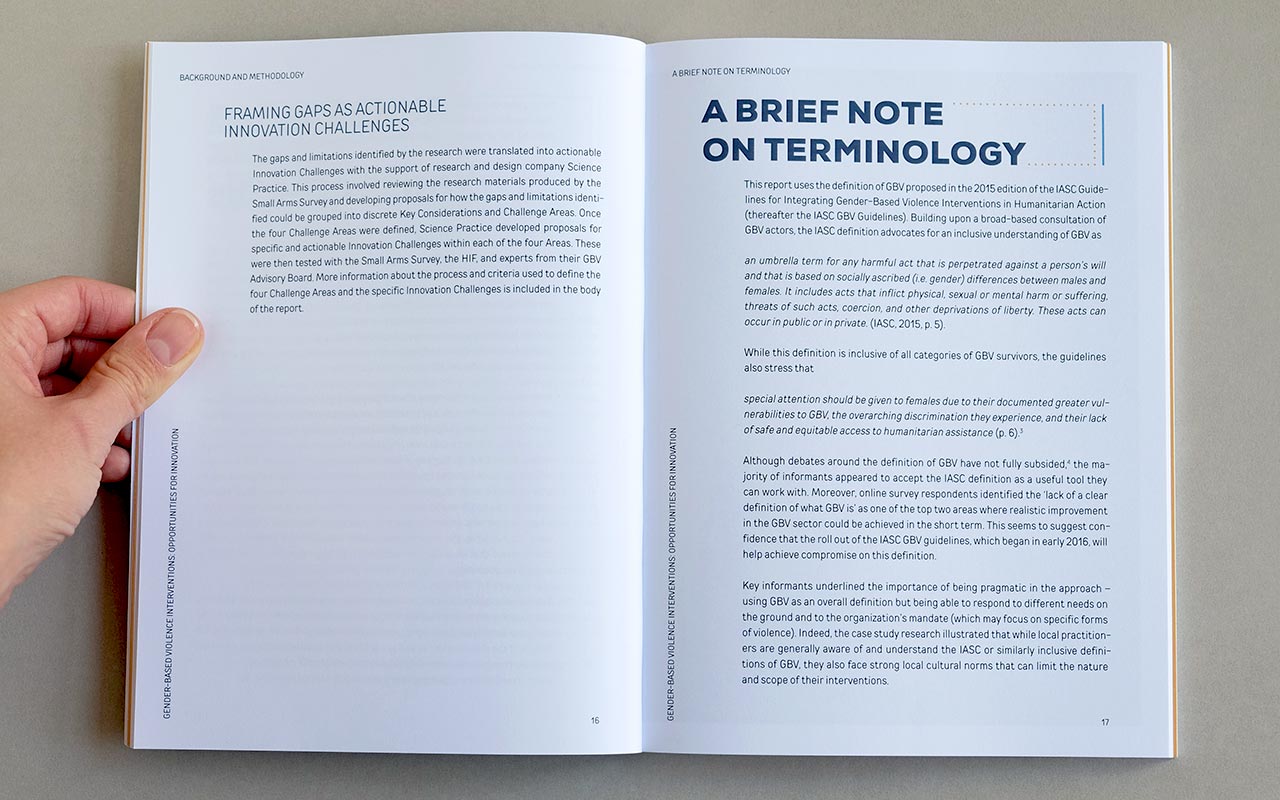
Forward note on terminology in the GBV Gap Analysis Report. We helped the HIF edit the report and Poważne studio helped design it. Read more about the project on our GBV Challenges page.
Gender-Based Violence
Most relevant in this case, IASC GBV Guidelines define GBV as “an umbrella term for any harmful act that is perpetrated against a person’s will and that is based on socially ascribed (i.e. gender) differences between males and females.” This definition is purposefully open to be inclusive of all categories of GBV survivors including men, boys, and the LGBTI community. Still, the guidelines stress that females should be given special consideration due to their documented greater vulnerability to GBV, especially in a humanitarian context.
Despite this emphasis, the change in perspective to adopt a more inclusive definition of GBV has generated tensions. Advocates for GBV as a female-centric issue argue that they have fought hard to get people and funders to pay attention to the topic within the context of humanitarian emergencies. Their concern is that now that the topic is gaining increasing attention, broadening the focus of GBV to include men or the LGBTI community would lead to a dilution of this message, and most significantly, a dilution of the funding allocated to the cause.
The lack of consensus on the definition of GBV had two consequences:
-
it was difficult to have a clear delimitation of the problem
-
it was difficult to move conversations beyond this point.
This problem was often flagged up by the research partners on the project, the Small Arms Survey. Doing research on the ground, they noticed that the lack of a common definition for GBV led to disagreements and used up valuable resources.
We weren’t in a position to provide an answer to the debate, but it became obvious that focusing on language on its own wasn’t going to lead to any progress. So we made a decision to move the conversation a step forward.
We acknowledged the different perspectives and decided to adhere to the broad definition proposed by IASC GBV Guidelines. As the role of the challenges we were designing was to open up problems in the GBV humanitarian emergency sector to a wider group of people and skills, this definition felt appropriate and timely. It also set the tone for the challenges as it implied an inclusive way of approaching the problem, one that required a new and open language. This decision allowed us to move beyond the stalemate and refocus the conversation on concrete barriers that are holding back progress.
Innovation in a GBV Context
The term ‘innovation’ presented a different provocation. The problem with the term ‘innovation’ is that it has been overused and so often misused that it’s lost meaning. The problem with using it in the context of GBV was that it was seen by some as frivolous.
But innovation is not about gadgets or high-tech solutions, it’s about adding value. Innovation is about creating something new – whether it’s a product, service, or approach – that adds value and leads to an improvement of a current situation.
It was this definition and idea that the HIF were keen to communicate through the challenges. Their goal was to not only reestablish the meaning of ‘innovation’, but also create a place for it in the space of humanitarian emergencies.
Our contribution to this process was to make sure the innovation challenges we were designing were targeting real and significant problems and would support the development of genuine and valuable solutions. While our role was to offer a new perspective on core problems and engage a broader audience of problem-solvers, we wanted to make sure that we were presenting a balanced view of the complexities entailed by each challenge and avoided oversimplifications.
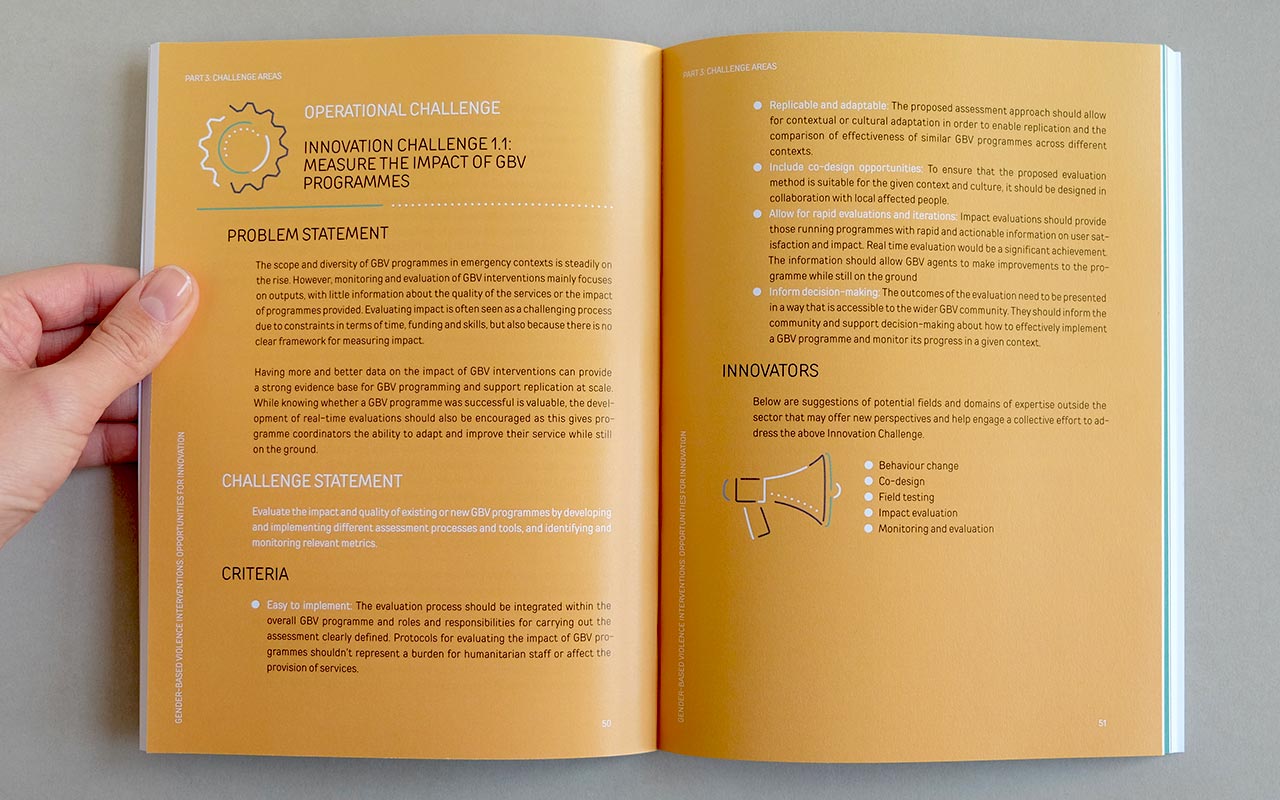
Sample Innovation Challenge looking at measuring the impact of GBV programmes in humanitarian emergencies. See full GBV Gap Analysis Report.
One other important aspect that we became aware of was that the ‘novelty’ implied by ‘innovation’ is context dependent. Having worked mainly on designing challenges where solutions were non-existent because of current technological limitations, we were used to ‘novel’ as meaning ‘new to the world’. However, for problems faced in the humanitarian sector, solutions often exist but they are not suitable for a space with limited resources. ‘Novelty’ here can mean creating completely new solutions, but it can also mean adapting existing solutions to a humanitarian context and be just as valuable.
It was through this lens that we designed the innovation challenges. While most of the problems identified were not necessarily new or unknown to GBV practitioners, what was novel about them was the perspective from which they were presented, the clarity with which they set priorities for action, and the different audiences they were targeted at.
Defining the terms we use when working on a new problem area will always be a priority for us. What we’ve learned from this project is that, sometimes, definitions are not readily available but need to be considered and constructed as part of the innovation process. In these cases, the ambition goes beyond that of designing innovation challenges and becomes that of creating a language that can support a new way of thinking and collaborating around problems.
We recently had our first ever awayday, and walked 12 miles in the process.
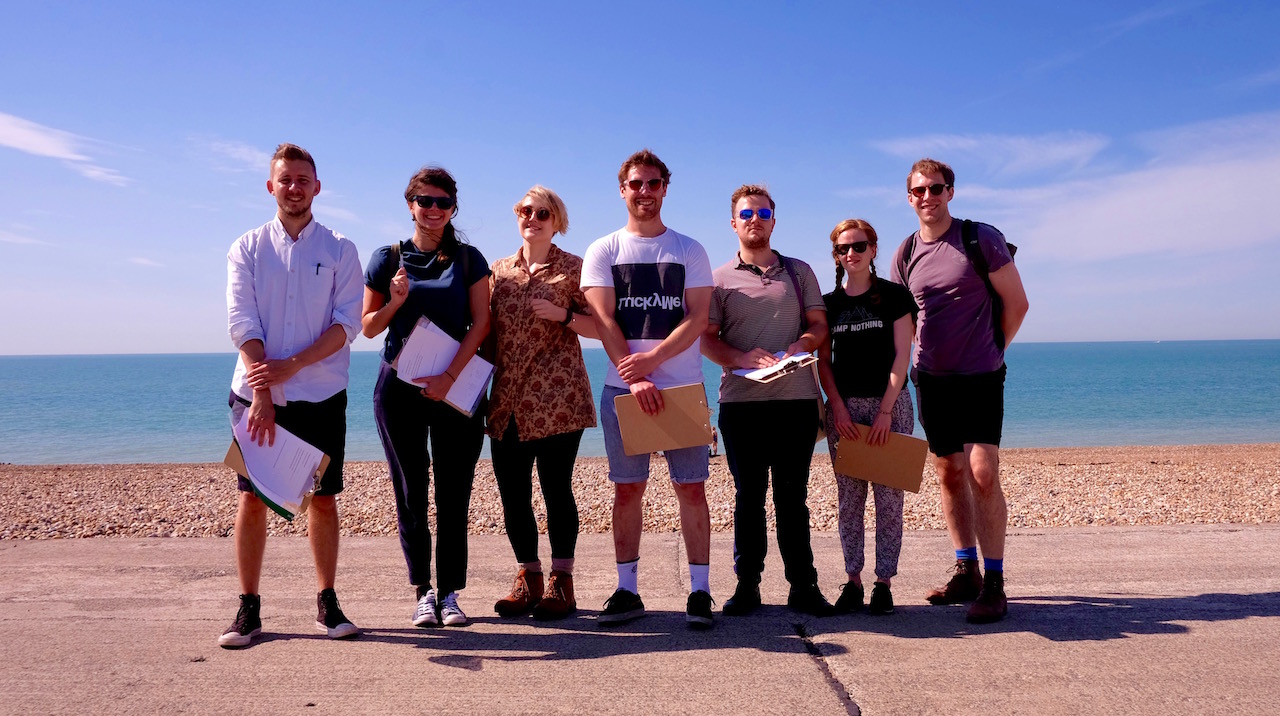
The Science Practice team at the beach.
Like many companies, there are some things about the way we work, our aims and ambitions, and our company culture that never manage to get spoken about. The day-to-day pressures of projects and clients take over, preventing meaningful discussion about possible changes to working practices and directions within the company.
One way of encouraging these kinds of discussions are through an awayday - literally a day away from the office (and the laptops, projects and clients that go with it) where people are free and comfortable speaking their mind.
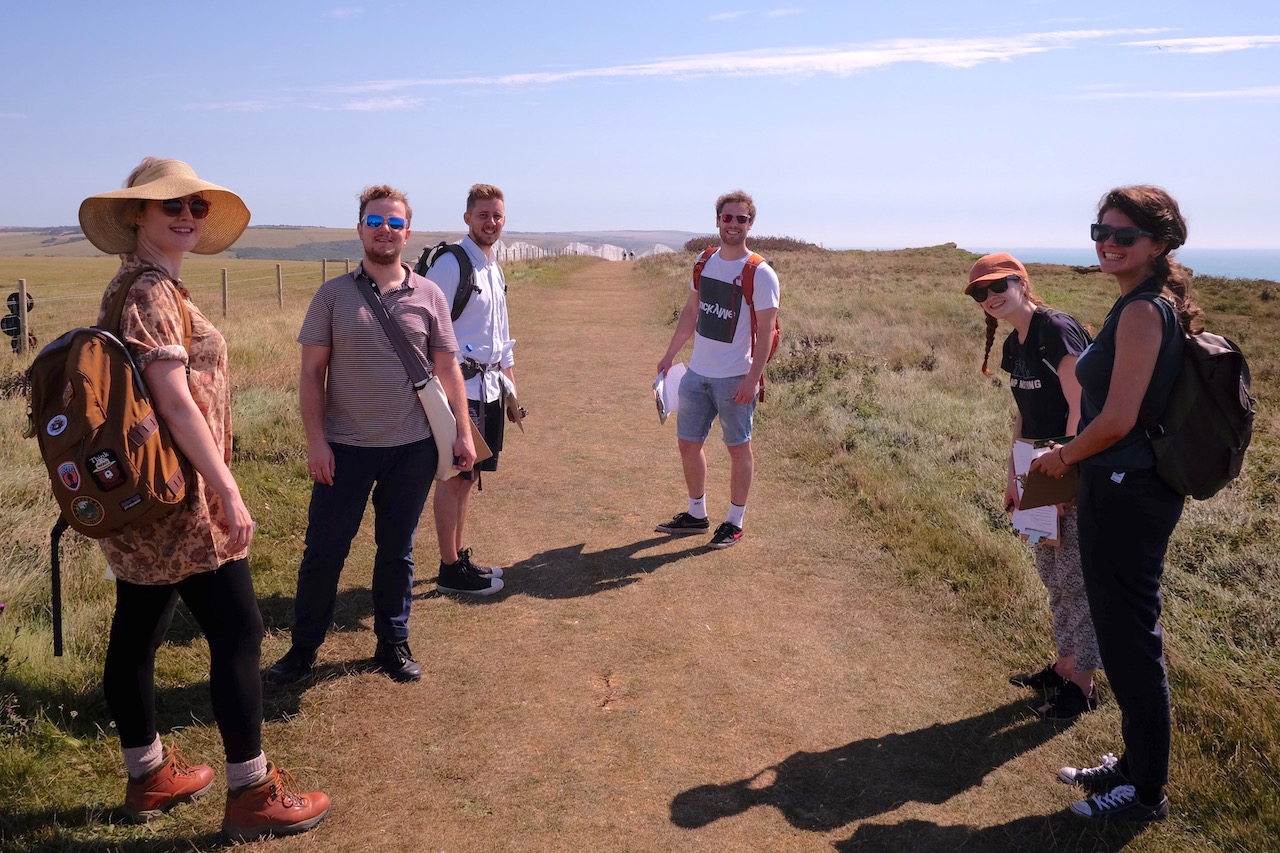
Setting off on our walkshop 🌞😎🗺🚶🏼🏖📋.
Taking inspiration from the walkshops run by lecturers at the Steps Centre at the University of Sussex, we decided to take our awayday outside on a day’s walk. A walkshop is described as a ‘walking workshop’, and is based on the idea that the process of walking while talking helps to introduce an atmosphere of openness, and facilitates easy flowing conversation.
Looking for good walks accessible from London, we found the walk across Seven Sisters Cliffs from Seaford to Eatbourne. The walk has some really great views, and is easy to navigate being one stage of the South Downs Way which traverses the entire width of the South Downs National Park.
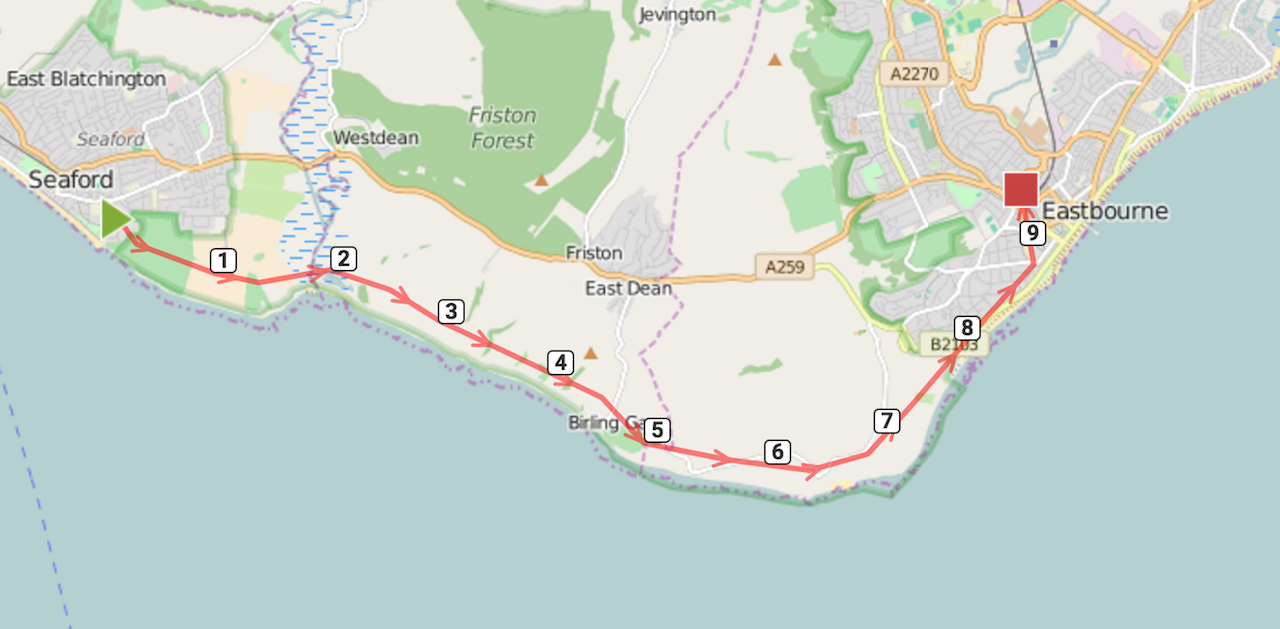
Our planned route.
Awaydays need different levels of planning depending on their intended outcomes. As we were looking to have constructive conversations and walking a fairly substantial distance, we decided to plan out some specific discussion topics and activities.
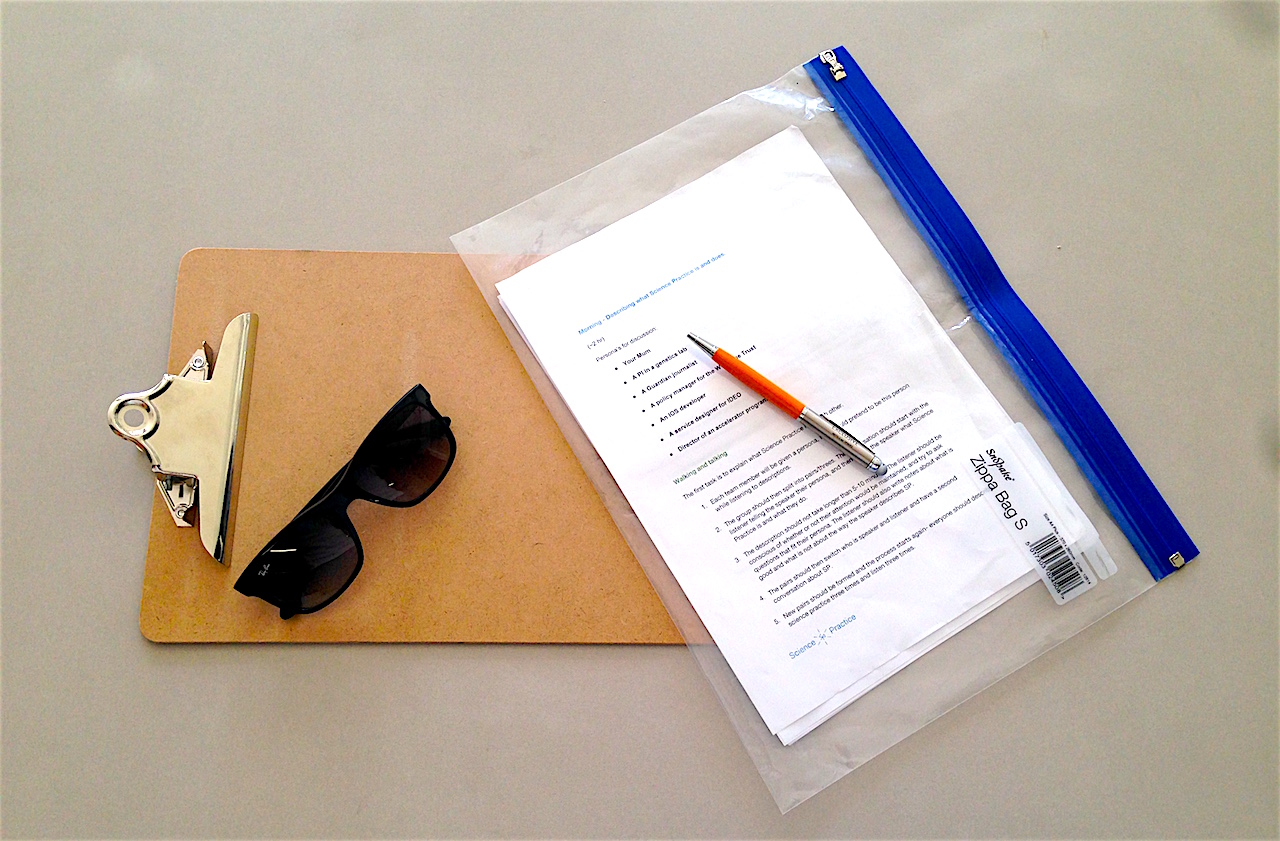
Essential awayday equipment.
We decided on three topics for the day: ‘Communicating about Science Practice’, ‘The 5 year plan’ and ‘Roles at Science Practice’. While walking people naturally form and break groups, so we designed activities that worked with this dynamic. We had one-on-one interviews and conversations, and also did wrote down some ideas beforehand to ease the amount of writing needed while walking.
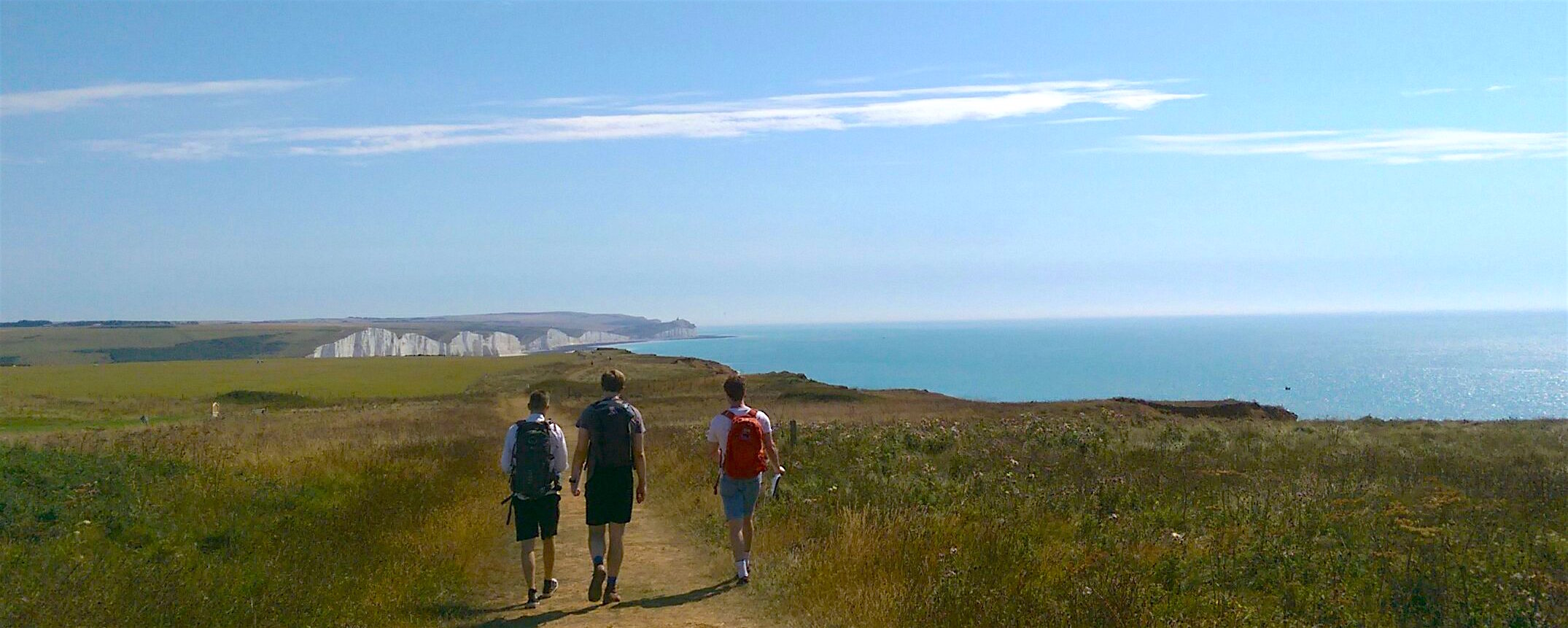
Walking and talking.
Each of the cliffs of the Seven Sisters, has a ‘brow’ and a ‘bottom’ essentially meaning that there are seven ups and seven downs, some of which are quite steep. Bearing this in mind we designed some ‘thinking’ time for the uphill sections, discussions on the downhill part, and breaks to have full group conversations (and lunch) at the peaks.
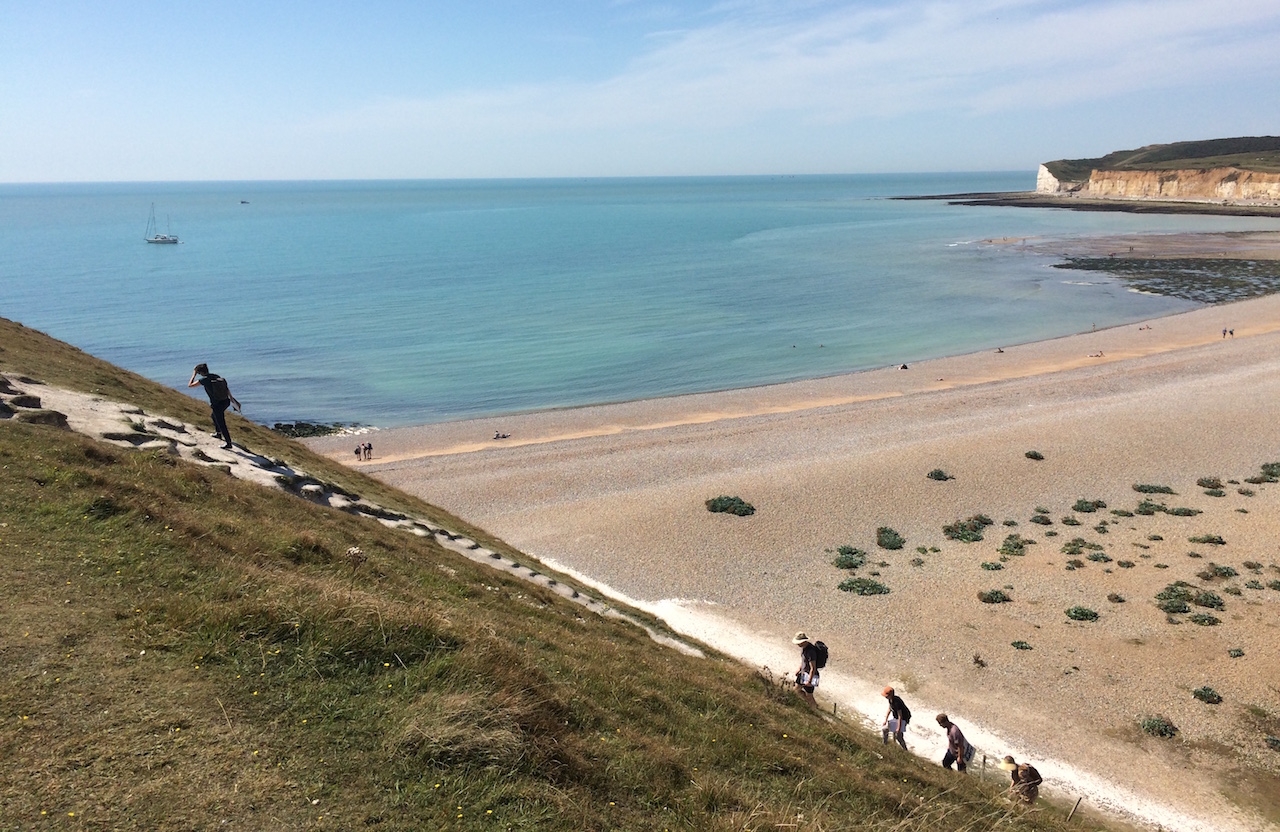
Thinking time.
We checked the weather forecast a week in advance to give us as good a chance of sun as possible. It turns out that the day we chose was one of the hottest days of August, with unrelenting, beautiful blue skies.
We set off from Seaford station, with clipboards in hand to begin our first activity. It genuinely felt as if everyone had left their normal responsibilities in London and it was refreshing to speak about the issues that had been hanging in the backs of our minds. It did really help that the views from the tops of the cliffs are fantastic, as well as the downs providing some opportunities to get our feet wet!
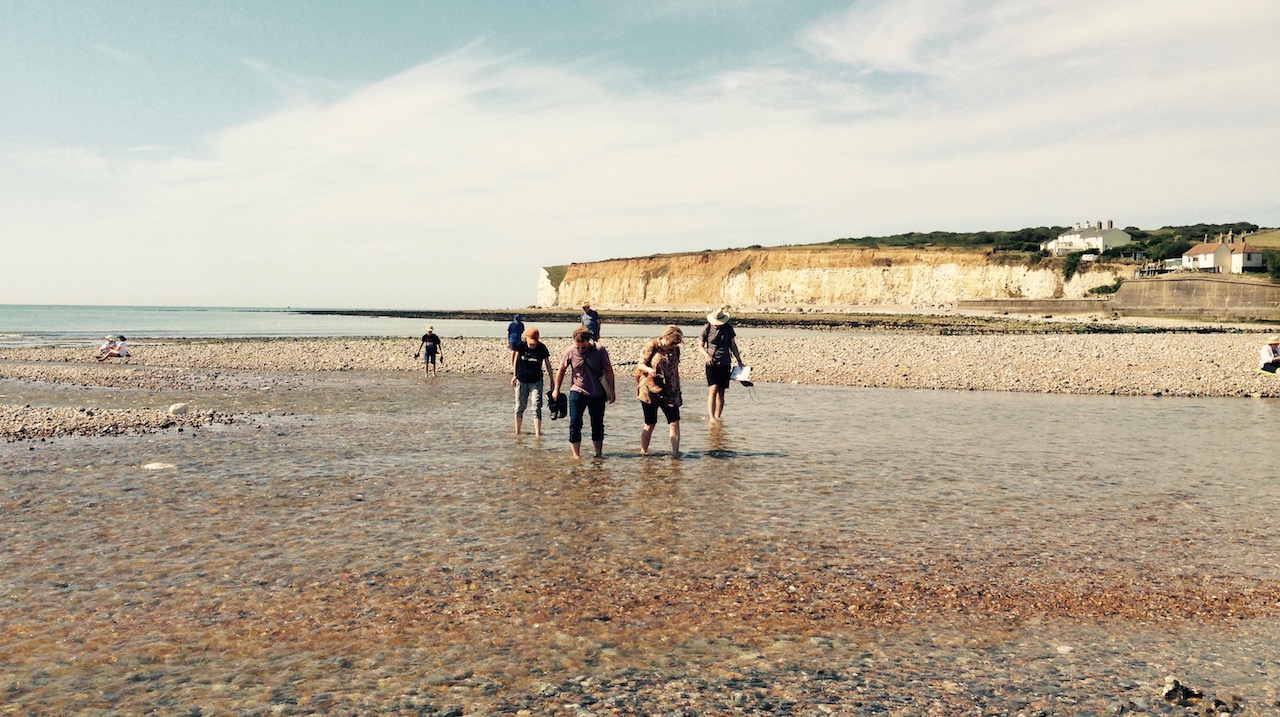
Crossing the Cuckmere River.
During our discussion at lunch, it did dawn on us that we hadn’t yet got half way and it was nearly 3 o’clock! After this point we did have to walk a bit faster than was intended. Although conversations continued, it was harder to bring everyone back together to share thoughts.

Tempest measured her heart rate as we crossed the cliffs.
The walk ended in Eastbourne at a pub by the station (where we ate bowls of chips faster than should be humanly possible). We were tired, but happy, with a satisfying feeling of a day’s exercise and thought.
Overall we found the format of a walking workshop a useful and fun experience. After reviewing our notes, thoughts and conversations in a short meeting the day after, we found we had come up with some novel ideas and concrete actions that should have a positive impact on Science Practice.
We also learnt a few lessons that could make a big difference for anyone else planning a similar workshop:
-
12 miles is a little too far: The distance meant that there wasn’t enough time to sit down and discuss our conversations fully during the walk.
-
A walk with some shade would have worked better: While it feels crazy to be complaining about the sun in the UK, the constant heat did make it hard to concentrate at times, and gave us some very pink faces by the train home.
-
The clipboards and preparation beforehand helped a lot: A walkshop doesn’t really work well with lots of writing so a bit of preparation to minimise this is useful, however it is important to take some notes during conversations to make sure important points aren’t forgotten.
-
Responsibilities and actions for people after the workshop should be agreed. Awaydays are fun, but they are also an opportunity to come up with ideas and actions to improve how your company functions. After the day any new responsibilities should be agreed and then checked up on regularly, especially if they are culture changes.
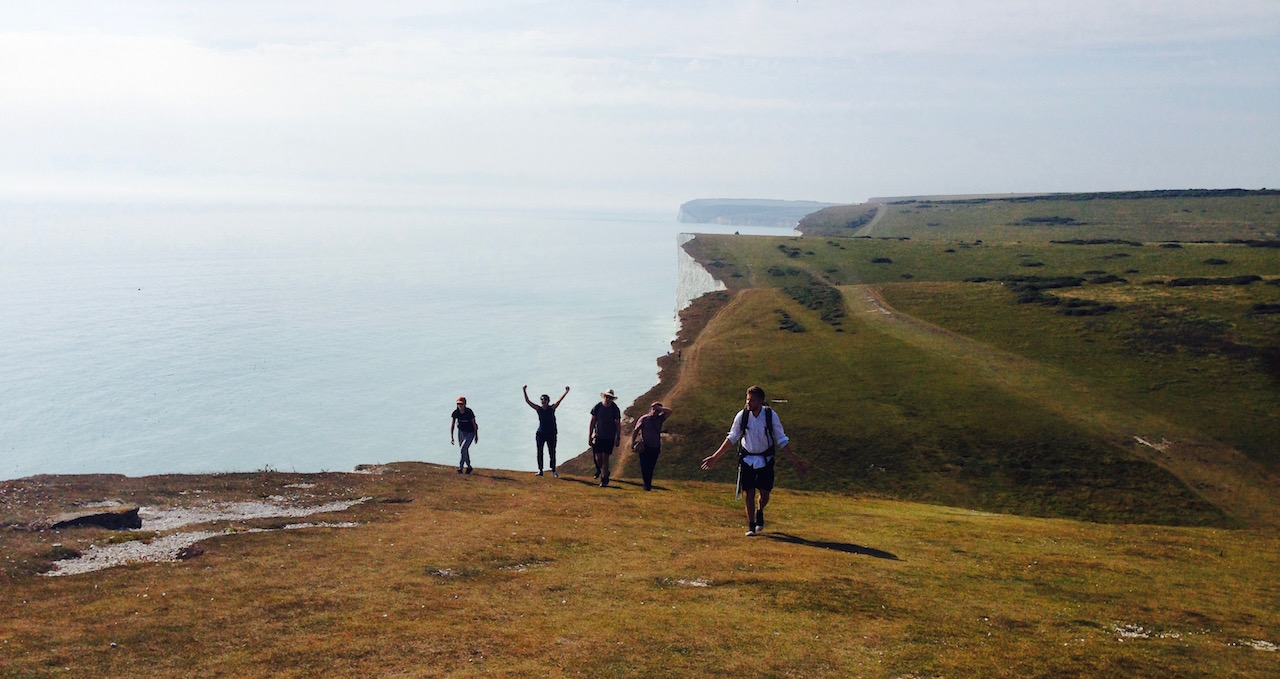
This year Science Practice has been moonlighting in the world of social innovation and humanitarian aid through our work with the Humanitarian Innovation Fund (the HIF). We learned a lot about social innovation funding methods from our work with the HIF and want to understand if any of our learnings could translate to the domains of funding for science.
A brief tour of social innovation funding models
Social innovation is defined as a novel solution to a social problem that is more effective, just, efficient or sustainable than current solutions. In other words, the value created should benefit society rather than individuals. With this definition in mind, many of the world’s most recognised foundations including the Rockerfeller Foundation and the Bill & Melinda Gates Foundation have been using different funding models to facilitate innovation to best achieve their social aims. The dominant method of funding over the last 20 years is the strategic model, which is defined by a process of outlining clear goals and advocating for data-driven strategies, accountability and evaluation. The approach was developed to support funders to align their programs and grant-making with carefully designed theories of change to produce clear and quantifiable results. The strategic model aims to be strongly predictive of the end results. So, while the model works well to address clear cut problems (like building a hospital), it tends to fall short when addressing the complex problems (like population health, water shortages and food security) we are challenged with today.
To cover these shortcomings, a new “emergent approach” has surfaced. The use of the word “emergent” suggests that an organisation is actively learning what works in practice. In doing so, the approach promotes iteration, failure, learning and knowledge development. There is no pre-determined point of view or a dominant idea of an answer to a problem. Instead, emergence encourages the input from novel ideas, processes and people.
At Rockerfeller, this approach starts with applying the same rigor and critical thought to framing a problem area as it does to evaluating the success of a grant. The foundation’s “Search” function is a highly strategic, analytical process that involves the coordination of internal staff, consultants, and nearly 200 outside experts to help the foundation appropriately frame a problem space. This includes an understanding of interlinking and underlying issues that must be considered in order to find a solution. This process is not dissimilar to Science Practice’s own process of identifying Good Problems. To anyone at Rockerfeller who might be reading this, it would be good to share notes!
New models to fund social innovation are gaining traction. Venture philanthropy aims to build self-sustaining or even profitable enterprises in unlikely places such as disaster relief or drug addiction. Social Impact Bonds (SIB) channel private funding into social initiatives and are backed by the British government who pays interest that rises and falls with the success of the venture. If the initiative fails to fulfill its social aims, investors will simply pursue other opportunities.
What science funding can learn from social innovation
Social Innovation funders (like the HIF) generally have a very clear idea of what change they want to see in the world and apply funding to achieve that vision. In comparison, some science funders, work across a broad remit. With big aims like the Medical Research Council’s desire to “improve human health through world-class medical research”, it’s less clear how science funding is allocated to achieve such goals and objectives.
Since the publication of the Warry Report in 2006, UK science funders have worked to better understand the link between scientific research and economic and societal impact. Factors including political pressure, genuine need and increasing impatience with the pace of scientific discovery have encouraged a renewed focus on supporting research with “impact”. This has helped to shape a shift in trajectory of scientific funding towards translational research. Here, lessons from social innovation can help us to think differently about how science funding is allocated and its impact measured.
Considering that translational research is an area where the development timelines can be long, intermediate indicators of progress are needed. To do this, funders could support teams of researchers working to better coordinate knowledge across basic and translational research. Like the “emergent” approach in social innovation, funders could distribute monies, measure and evaluate the intermediate indicators and adjust future funding accordingly.
To do this effectively, funders would need to be much more opinionated about identifying specific research goals to target and be more strategic about how resources should be spent in achieving such aims. But looking at the Medical Research Council’s study on “Measuring the link between research and economic impact” it’s clear that funders might not have sufficient data to understand what proportion of translational output arises from strategic initiatives- ongoing funding schemes in specific areas- and how much is shaped by the “response mode”, a more flexible funding call. A better understanding of what works when it comes to shaping funding schemes and cycles in science research funding would be an excellent place to start (and something we would be really keen to explore).
Processes that are expected to accelerate translation include such things as a good collaborative culture. The more recent development of research sandpits- a facilitated workshop where participants from different disciplines, work in small groups to brainstorm and refine ideas for joint research projects- are being promoted across research councils, universities and big funders. Promoted as a new, innovative way to allocate funds, it’s unclear if the strategy is working and if not, there is little insight on how they could be improved. Better data on the effectiveness of collaborative processes in science and their ability to contribute to more impactful research are needed.
There has been renewed focus on the contribution of venture philanthropy in science R&D. The influence of nonprofits in shaping new models to allocate funds is of note. The Association of Medical Research Charities estimates that nonprofits contribute £1.3bn to the UK’s academic research base, a considerable chunk of change. But medical research charities are looking for new innovative and entrepreneurial models of funding research and are taking greater risks in hopes of discovering the next cure.
Taking a cue from their American sister organisation, the Cystic Fibrosis Foundation, the UK’s Cystic Fibrosis Trust, who used to place all its funds raised into academic research, are now seed-funding biopharma. Investment in biotechnology startups they admit, comes with significant risk, but potentially greater reward when aiming for a cure. The funding the Trust does allocate to academic research has been re-engineered to promote a larger pool of ideas and has established new way of collaborative working across their research base. The In addition, the Trust aims to take the money donated and amplify it with the establishment an Investment Fund to unlock additional sources of money to support scientific breakthroughs.
So, as funding for social innovation transitions to be more responsive to the needs presented by complex, global challenges it appears science funding is in a state of transition too. Each acknowledge that traditional grant making may be too rigid and are challenging the prescriptive allocation of funds with structures that support risk, investment in new business models and a more iterative, responsive approach to understand what’s working. How this shift in science challenges the support for blue skies research and discovery for discovery’s sake (which is something we really believe in) has yet to be fully measured and understood.
We are really interested to learn more about innovation in science research and social innovation funding. We are keen to collaborate with individuals and organisations who want to actively explore some of the ideas presented in this post.

